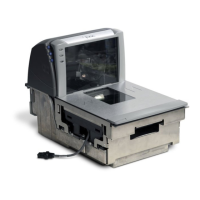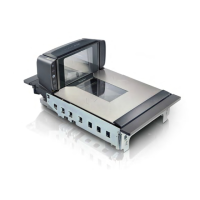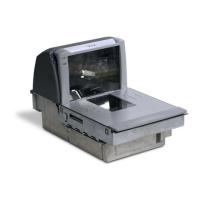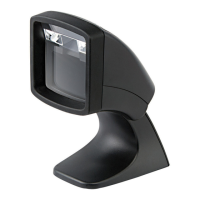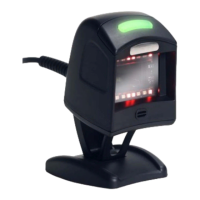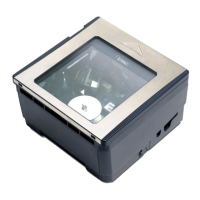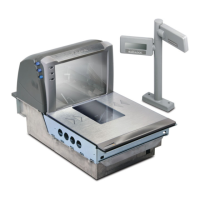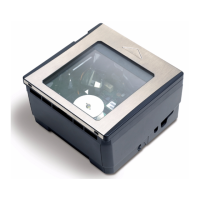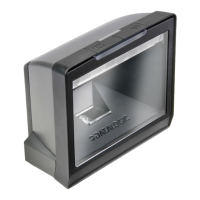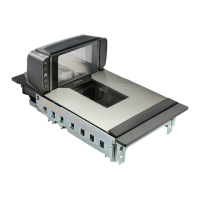
Do you have a question about the Datalogic Magellan 9300i and is the answer not in the manual?
| Input voltage | 100 - 240 V |
|---|---|
| Input frequency | 50 - 60 Hz |
| Power source type | AC |
| Power consumption (standby) | 11 W |
| Type | Built-in bar code reader |
| Sensor type | - |
| Scanner type | 1D/2D |
| Light levels (direct sunlight) | 0 - 86080 lx |
| Linear (1D) barcodes supported | GS1 DataBar Expanded, GS1 DataBar Omnidirectional, JAN, U.P.C. |
| 2D (matrix & stacked) barcodes supported | Aztec Code, Data Matrix, Micro QR Code, QR Code |
| Storage temperature (T-T) | -40 - 70 °C |
| Operating temperature (T-T) | 10 - 40 °C |
| Operating relative humidity (H-H) | 5 - 95 % |
| Standard interfaces | RS-232 |
| Connectivity technology | Wired |
| Product color | Black, Grey |
| Built-in display | No |
| Sustainability certificates | RoHS |
| Weight | - g |
|---|
Describes the manual's contents, features, specifications, and organization.
Details the physical components and functionalities of the scanner.
Describes the available ports and their functions.
Covers performance, environmental, and electrical specifications.
Details scale capacity, minimum weight, and calibration.
Explains the required warm-up periods before operation.
Details power supply requirements and safety precautions.
Lists general safety guidelines and FCC compliance.
Lists regulatory compliances for various regions.
Lists all supported 1D and 2D symbologies.
Provides information on how to get technical assistance.
Covers factors and guidelines before installing the scanner.
Provides guidelines for checkstand design and user comfort.
Discusses counter preparation and optimal scanner placement.
Details ventilation needs and environmental considerations.
Outlines needs for maintenance access.
Specifies minimum vertical space requirements.
Provides physical dimensions and reference for cutouts.
Covers preparation of the checkstand for installation.
Provides guidelines for preparing the checkstand opening.
Details the physical installation process.
Instructions for unpacking the scanner.
Guides on routing and connecting cables.
Explains powering up and testing functionality.
Details connecting the scanner to the POS system.
Covers mounting the scanner flush with the countertop.
Explains how to scan items and the scanning zone.
Provides tips for efficient and ergonomic scanning.
Details correct placement of items on the scale.
Describes EAS tag deactivation.
Lists controls and indicators.
Describes different operating modes.
Outlines steps before normal operation.
Details configuration states and requirements.
Describes Normal Operation and Sleep Mode.
Covers programming, diagnostics, and resets.
Explains how to customize features via bar codes.
Covers zeroing and calibration.
Covers routine maintenance procedures.
Provides instructions for cleaning exterior surfaces and scan windows.
Describes the scanner's ability to capture images.
Details the Customer Service Scanner functionality.
Explains how to enable or disable the CSS feature.
Explains the self-test performed at power-up.
Describes tests run during normal operation and sleep mode.
Details diagnostic tests for scanner/scale.
Explains error sequences and their meanings.
Details the calibration process and required tools.
Verifies scale stability during motion.
Verifies the automatic zero setting mechanism.
Steps before starting calibration.
Step-by-step calibration instructions.
Explains how to customize features using bar codes.
Provides foundational knowledge for programming.
Explains the two methods of programming.
Describes programming using a handheld device.
Explains the scanner's programming mode.
Instructions for entering/exiting programming mode.
Describes the prominent LED indicator bar.
Describes control buttons and LED indicators.
Details functions of the scanner control button.
Explains the function of the scale zero button.
Details LED and audio indicators.
Explains scanner and scale LED status.
Introduces pinout information for creating cables.
Covers wire requirements and gauge.
Provides detailed pinout information for connectors.
Details pinouts for various ports.
Describes the use of bar codes for entering numbers/characters.
Details compatibility with SD/SDHC cards.
Provides instructions for inserting the card.
Instructions for removing the card.
Explains how the scanner processes AUTORUN.DLS files.
Provides details on scanner-to-card and card-to-scanner operations.
Details exporting files to microSD.
Details loading files from microSD.
Lists RS-232 commands the scanner accepts.
Provides a table of default settings for various interfaces.
Contains the detailed default settings.
General notes on data formats for handheld scanners.
Specific format requirements for Datalogic handhelds.
Describes AIM format for label data transmission.
